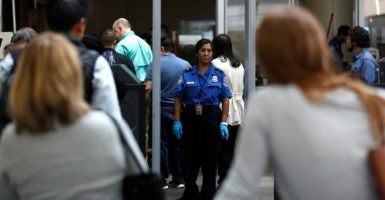For anyone planning to fly this summer, there’s a good chance you will spend time waiting in a massive line.
An estimated 231.1 million travelers are expected to fly U.S. airlines this summer, a 4 percent increase from last year’s high.
Earlier this year, thousands of travelers missed flights after waiting more than three hours at security checkpoints. With an increase of air travelers expected this summer, reforming the airport security process is more relevant than ever. While reforming the Transportation Security Administration is not a new concept, it is definitely an important one.
Last summer, a series of tests conducted by Homeland Security Red Teams, or undercover agents, unveiled the TSA failure to detect mock explosives and weapons 67 out of 70 times at various security checkpoints. When this is combined with significant wait times it becomes clear that the entire system requires change.
The TSA could benefit from significant reforms in two key areas: its trusted traveler and private screening programs.
TSA PreCheck is a trusted traveler program that allows members to expedite the screening process by undergoing a background check and vetting process. With over 180 airports and 3 million members, travelers are experiencing shorter wait times, with 95 percent of members reporting wait times of five minutes or less in June.
The Department of Homeland Security also has several other trusted travelers programs that provide low-risk travelers a streamlined security, customs, and immigration screening. Risk-based security allows the U.S. to use its limited security resources more efficiently, focusing security on individuals who are either higher or unknown risks.
Airports also have the right to opt out of TSA-administered screening through the Screening Partnership Program, which allows airports to take advantage of private sector efficiency in the screening lines while remaining under TSA oversight and security rules.
As of January 2015, 21 airports were participating in the Screening Partnership Program. Airports using the program have reported improved customer service, shortened wait times, and reduced costs, all without sacrificing the ability to detect security threats. Restrictive regulations making it hard to use the program are harming its adoption and should be done away with so that more airports can take advantage of it.
With increased passenger demand, longer airport wait times, and continuing security issues, fixing the TSA is something that many people can agree on. This can be done if Congress and the TSA simplify and strengthen programs that already exist, improving security and traveling experience.




























